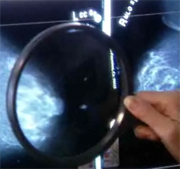
WEDNESDAY, Dec. 1 (HealthDay News) — A chemotherapy regimen already proven superior to other regimens for breast cancer that has spread to the lymph nodes may also work better for some women whose cancers haven’t spread, a new study has found.
When it came to these “node-negative” cancers, the drug combination of docetaxel, doxorubicin and cyclophosphamide (dubbed TAC) outperformed the combination of fluorouracil, doxorubicin, and cyclophosphamide (FAC), the Spanish study authors said.
The TAC regimen was better at keeping women alive and disease-free after a median follow up of almost six and a half years, the study found.
”For those women with higher-risk, node-negative breast cancer, in which chemotherapy is indicated, TAC is one of the most interesting options,” said study co-author Dr. Miguel Martin, a professor of medical oncology at the Hospital General Universitario Gregorio Maranon in Madrid.
The study was funded by the drug maker Sanofi-Aventis — which makes Taxotere, the brand name for docetaxel — and GEICAM, the Spanish Breast Cancer Research Group. The results are published in the Dec. 2 issue of the New England Journal of Medicine.
To determine which women with breast cancer would benefit from adjuvant chemotherapy (typically chemotherapy after surgery), doctors take into account a number of risk factors, such as the patient’s age, tumor size and other characteristics.
For the new study, the researchers assigned 1,060 women with breast cancers that were axillary-node negative who had at least one high-risk factor for recurrence to one of the two treatment regimens every three weeks for six cycles after their surgery.
At the 77-month mark, almost 88 percent of the TAC women were alive and disease-free, compared to close to 82 percent of the women in the FAC group. Those in the TAC group had a 32 percent reduction in the risk of recurrence, the study authors said.
The reduced risk held true even after taking into account a number of high-risk factors, such as age, the women’s menopausal status and tumor characteristics.
The differences in survival rates weren’t significant from a statistical point of view — 95.2 percent of TAC-treated women survived the follow-up, compared to 93.5 percent of the FAC-treated women.
However, adverse events from the drugs were more common with TAC — 28 percent of patients, compared to 17 percent of the FAC patients.
”TAC is more toxic,” Martin said, adding that ”all the toxicities were reversible.” One common side effect was neutropenia, an abnormally low number of white blood cells. Fatigue was also a problem, the study found.
Another consideration: TAC chemotherapy is also substantially more expensive than FAC, Martin said, although he could not specify exactly how much more.
Even so, he said, “I think this study provides grounds for thinking of this regimen, particularly for those women with high-risk node-negative breast cancers.”
Dr. Minetta Liu, director of translational breast cancer research at the Lombardi Comprehensive Cancer Center at Georgetown University, said the new study supports what many oncologists are already doing.
“Many oncologists are incorporating taxenes [such as docetaxel] in the adjuvant treatment for node-negative breast cancer,” said Liu, who reviewed the study findings but was not involved with the research.
The ongoing challenge, Liu said, is deciding which women need the additional therapy. “This particular study’s importance is that it illustrates there is a benefit in incorporating a taxene into the adjuvant treatment for some women with node-negative breast cancer.”
More information
To learn more about breast cancer treatment, visit the U.S. National Cancer Institute.

